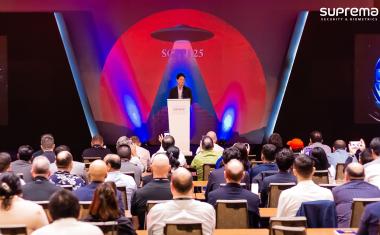Assa Abloy: New Whitepaper Explores Access Trends and Market Drivers in Multi-residential Property
“Multi-residential” or “multifamily” housing is now Europe’s second-largest real estate sector. Here, as in many other businesses, digitalization is gathering pace. Access and security management can lead a move to digital, streamlining operations and making life more convenient for residents, property managers and landlords, as a new Assa Abloy whitepaper explores.
Digitalization has penetrated almost every area of daily life. It makes sense that such technology keeps people and property safe, too: “The market is witnessing a digital transformation,” the whitepaper notes.
When tenants or homeowners choose a multi-residential property, they place their faith in property managers to deliver security and safety without hassle or worry. Building managers return this trust with responsibility, even in the face of time and cost pressures which inevitably come in a competitive market.
This is one major motivation to seek solutions which can help to shoulder some of the facilities management burden: Greater efficiency helps multi-residence housing providers to improve their service and boost resident satisfaction. When deployed effectively, a digital access solution around the building becomes a seamless experience for the resident and a reputation enhancer for the housing provider. It delivers concrete ROI.
Hand-in-hand with digitalization is the growing appeal of mobile or smartphone keys, also covered by the whitepaper. Many renters now expect the convenience of the mobile world, in everything from food delivery to banking and travel.
With mobile access, they get a connected experience, moving around the building hassle-free, between their apartment and common areas such as a gym, laundry room or private gardens. Instead of a bunch of keys, they carry one flexible, shareable virtual key to let visitors in remotely; they can share temporary keys, with visitors or family, which expire automatically.
Home automation systems, when properly integrated with digital access, also offer benefits such as smarter energy usage and real-time security notifications. Thus, convenience, connectedness and control are driving a global Property Technology market which may be worth more than USD 32 billion (EUR 30 billion) annually by 2030.
The whitepaper notes: “As more smart devices are installed into multi-residential units, the value for integrating access control into the smart home ecosystem only grows.”
Time-saving management of security and service providers
Digitalization also benefits property owners, investors and managers. It creates an efficient way to provide building security for tenants and their visitors, as well as temporary service providers or contractors.
With a digital system, service providers carry access credentials which fit their precise time-period and location requirements. Flexible access may be issued for multiple premises, if need be. For example, cleaners may be admitted 5 days each week, between 6am and 9am. Their programmable credentials only unlock site doors during this window. And their permissions can automatically expire after an agreed period.
With digital access, facilities staff no longer spend hours on traditional key management; nor do they need to change locks when keys go missing – which with mechanical security is, unfortunately, too often. Any lost credential is quickly deleted from the system: It won’t unlock doors, cabinets or any other access-controlled openings. This added flexibility in their workflow saves time; even more so if they can manage access from anywhere via a remote or cloud-based system.
Benefits for building owners, property developers and managers
“A digital solution offers the flexibility to meet almost any user or building management need,” says David Moser, SVP & Head of Digital Access Solutions EMEIA at Assa Abloy Opening Solutions. “A connected solution can put property managers in remote control of their premises. Choosing digital also saves time and money: Our solutions are easy to retrofit, with no need for cables. Access shouldn’t be a hassle. It should be seamless and convenient for both tenants and property managers. They should not be stressed… they should relax!”
From an investment point of view, digitalization provides more than just this immediate ROI. “It's fair to say, our experience and expertise in residential security and locking is unmatched,” he adds. “But no one can predict with 100 percent certainty where this market is heading. Certainly, installing digital systems in new-builds – and retrofitting them wirelessly to existing locations – is the best way to future-proof a multi-residential property for whatever comes next.”
The new whitepaper, “Multi-residential access management and security: The move to digital”, explores many more trends in this dynamic sector, including office-to-residential conversion and the changing expectations of 21st-century tenants, and can be downloaded for free.















